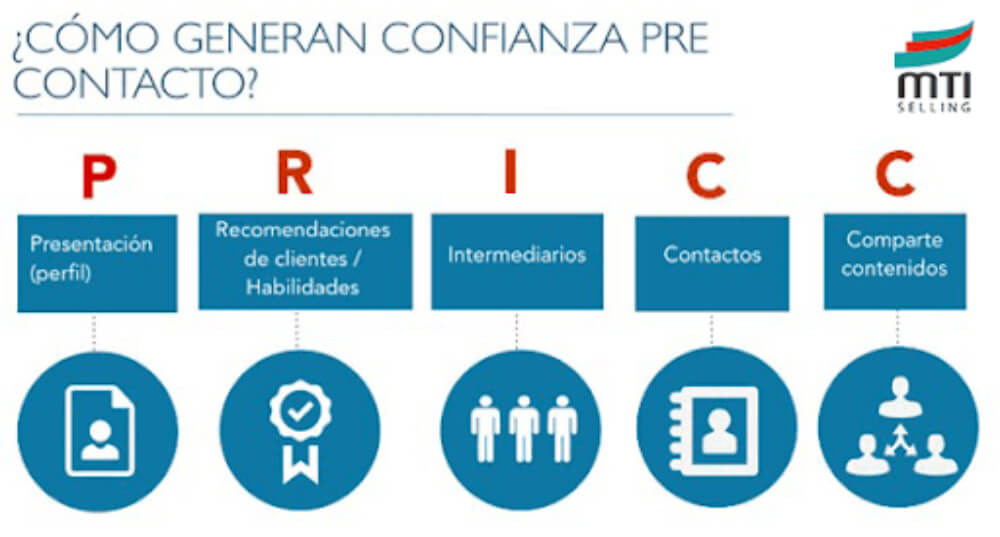The B2B customer conquest
Ximena Hernández Buffa

The PRICS model to build trust
The business process works as a personal conquest: we all want to buy, and sell, but we usually reject those who pressure, insist, or are too obvious in their need.
If we are buyers, we want to research, evaluate, ask for recommendations from our acquaintances. When we are already rejected by the other person, retaking the path of conquest is more difficult.
So, offering the product at the first contact with the customer is equivalent to asking for marriage at the first date. It’s a little premature, isn’t it? We must proceed step by step and lead our counterparty to become interested.
The customer goes through 57% of their buying journey before engaging with a business executive, according to HBR.
In MTI Selling, we developed two models for a commercial conquest: the PRICS model, consisting of preparation to generate trust in the customer validation and search period and the APAM model, to achieve an effective business approach to our customer. In this article we will be delving into the first model.

PRICS model
P - Personal presentation. What is the first thing we do before going on a date? We dress up! It is important to have a complete LinkedIn personal profile, as well as a LinkedIn company page, a website with quality content, audiovisual content and graphics. See how to have a high-impact personal profile on LinkedIn.
R - Recommendations. Over 8 out of 10 purchased services are purchased under the influence of a recommendation, according to Forbes.
In addition to showing customer references and alliances, it is important to work on the “recommendation effect”: success stories, where you deepen your business results, achieve more interactions on LinkedIn and webinars, and have validated skills on your personal LinkedIn profile. The “recommendation effect” generates immediate trust in our counterparty.
I - Intermediaries. Have contacts that can introduce us to other companies. As in the conquest, we can ask a friend to introduce us. We tend to respond and take actions when the counterparty is known.
For business purchases, it is easier to reach the decision maker when an internal contact introduces us, so choose to contact executive profiles first.
C- Contacts. There is no better investment than network marketing businesses, says Warren Buffet. It’s a math topic: the more contacts, the more chances I have to reach key professionals.
An excellent habit is to add every person we meet in the professional field to our personal LinkedIn account and incorporate them into the company database. Having several contacts in common with a person before contacting them makes them feel close to us.
C - Content. Make it your own creation and interesting for your customer. A person who does sports, knows languages, reads books and has travel anecdotes is a conqueror. Cultivating learning has a magnetic effect.
Original experience-based content is magnetic: post it on a web blog, on videos, webinars and through LinkedIn Company. In offline mode, workshops, success stories, and rotating talks can be held at business fairs.
At this first stage of knowledge on the part of the customer, it is important to make sure they know us in order to generate trust. We can invite them to an interesting event (workshop, webinar), then we can talk to them about our friends (customers and success stories) and invite them to our “house”, making it beautiful and perfumed! (the web, video channels and LinkedIn Company).
Let’s respect their recognition and validation stage, don’t ask them so many questions to tell us their problems when they don’t trust us yet. Let’s gain their trust slowly and charmingly.
Do you want to build a pipeline through Digital Selling? Get to know our strategy! Leave us your details and let’s start talking!



